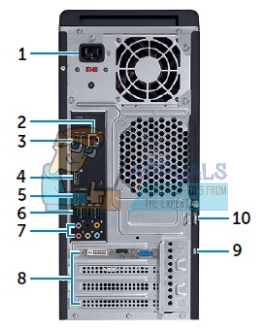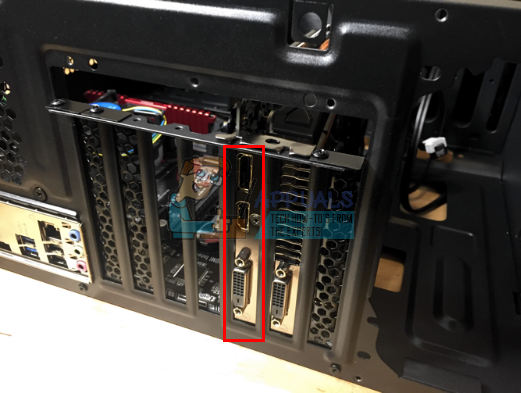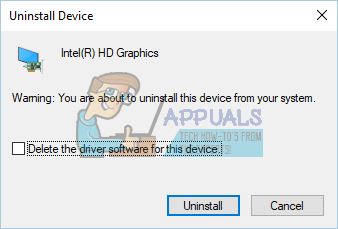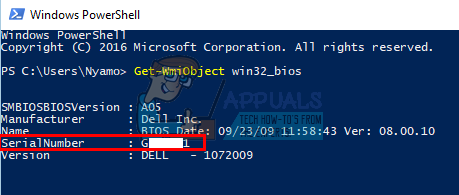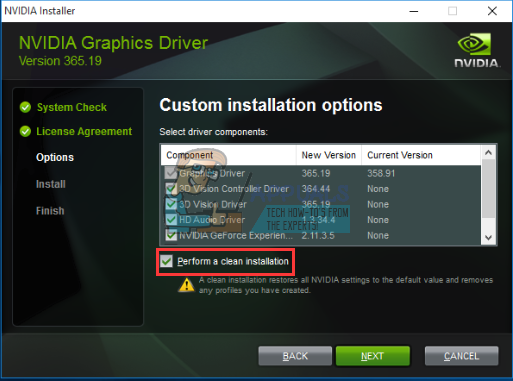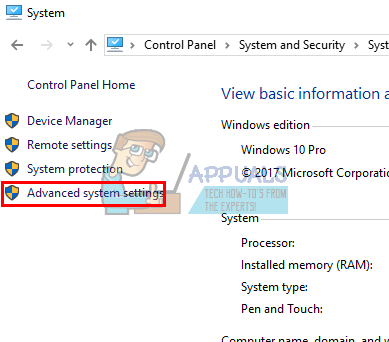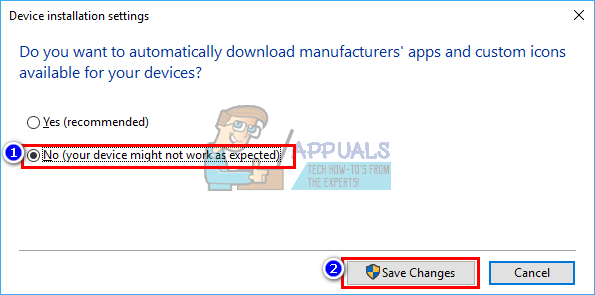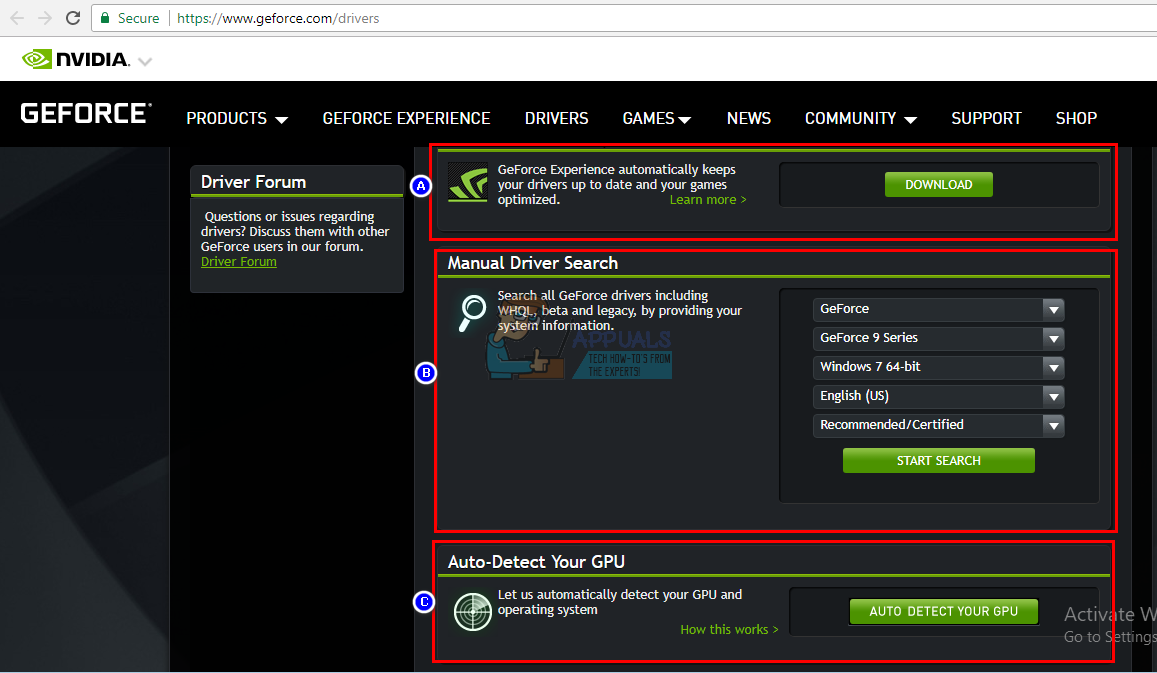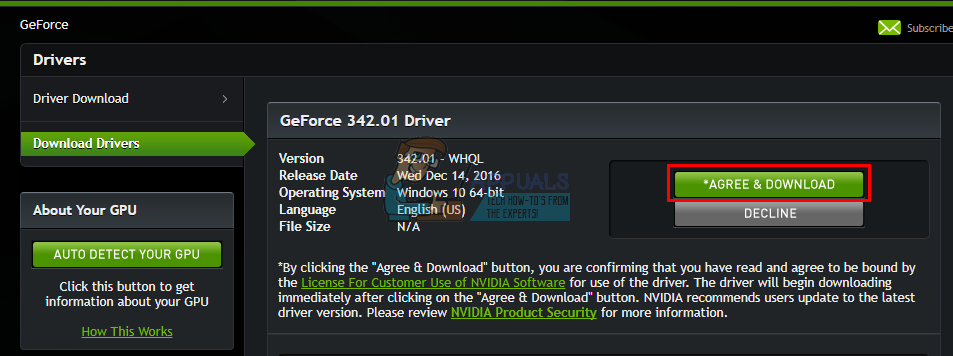A lot of users have been complaining that whenever they try to access the NVidia control panel, they get a message stating ‘You are not currently using a display connected to an NVidia GPU’ with the heading ‘NVidia display settings are not available’. This robs the users of the capacity to tweak their NVidia GPU to enhance its performance, resolution or speed among other things. The problem occurs in both desktop and dedicated NVidia GPU laptops. Despite this message a lot of users running a dedicated NVidia laptop (there is usually an integrated Intel GPU) indicate that the NVidia GPU seems to come online whenever graphic intensive tasks are run. For others, disabling the integrated GPU in device manager turns the screen blank, and a restart will boot into a VGA (800X600) display. Strangely enough, a lot of users report that whenever they are plugged into the HDMI instead of a VGA port, this message does not come up and they are able to access the NVidia settings. Why does this occur, and how can it be fixed? This article covers this problem and gives you the solutions to it.
Why you cannot access your NVidia GPU settings
Laptops that run Intel with NVidia dedicated graphics usually save power by reverting to the Intel GPU when displaying graphics that do not need a lot of GPU processing power. This is usually known as the NVidia Optimus. When you launch a game or Photoshop, or animation software or other apps that demand a lot of GPU power, the NVidia kicks in. you will usually see a light that turns on the top or on the side of your laptop. Earlier laptops could let you switch between the GPUs by pressing a button. On the other hand, desktop users always deploy the NVidia GPU via an expandable slot at the back. As the error message says, your NVidia will not work because the system is not able to detect it as the GPU that is currently displaying your screen. This simply means that for your desktop computer, your monitor is plugged into the wrong port at the back; hence your NVidia GPU is not active/online. This is why some users say that the problem is resolved when they plug into the HDMI port, but they are likely plugging into the correct NVidia GPU port. Also in most laptops, the NVidia GPU drives the HDMI and other external monitor ports. For laptops; at low power, your computer uses the Integrated Intel GPU. When you access the NVidia GPU control panel, it should be able to switch and bring the dedicated NVidia GPU online and allow you to access the GPU’s settings. However, if you have the wrong drivers – it does not matter how up to date they installed drivers are – then your laptop will not be able to make this switch. This is the reason why all users that have this problem insist that updating the drivers does not solve the problem. The reason is that they are installing generic drivers from the Intel website or from the NVidia website. Your laptop manufacturer will always add some elements into these generic drivers so as to tell your PC when to switch between the two GPUs. These drivers are known as the OEM drivers and this problem is one of the reasons why manufacturers insist on installing OEM (Original Equipment Manufacturer) drivers that come with your computer CD or those that can be found on their website using your service tag.
Method 1: Plug your monitor into the NVidia GPU port
If you have a desktop computer, it is likely that you are plugged into the wrong port at the back of your PC. You should be plugged into the NVidia GPU port and not the port that comes integrated to your motherboard. The NVidia GPU is plugged into the extension slots marked as 8 in the image below. Your NVidia GPU should look like the one marked as 9. It is easy to miss this port because it is usually plugged with dust covers and nubs. Simply pry off the dust covers and plug in your HDMI or DVI cable that connects to your monitor and the NVidia control panel should now work.
Method 2: Uninstall your drivers and Install the OEM drivers for your Intel and NVidia GPUs
Notebooks and laptops use NVidia Optimus that switches between the Intel and NVidia GPUs depending on the graphic demands. It knows when the NVidia GPU should kick in and when to revert to the low power Intel GPU. However, only the laptop manufacturer drivers can implement this and not the generic drivers from Intel or NVidia. To install OEM drivers: Step 1: Uninstall graphics drivers Step 2: Download and install the correct drivers Step 3: Hopefully Windows 10 will not update your drivers to wrong drivers. If you notice this behavior, prevent automatics updating of drivers by:
Method 3: Update your GeForce/NVidia Drivers
For desktop user, the NVidia GPU is independent of the Intel GPU. If your drivers are faulty, you can download the correct drivers from GeForce.
Method 4: Uninstall and reinstall your drivers
If your computer previously worked with known drivers, then there is a possibility your drivers are corrupt and you will need to uninstall and reinstall them. You can use DDU (Display Driver Uninstaller) from here or:
Fix: A Device Attached to the System is Not FunctioningHow to Setup Email Alerts for Network Attached Devices?Fix: You don’t currently have permission to access this folderFix: Radeon Settings Are Currently Not Available

